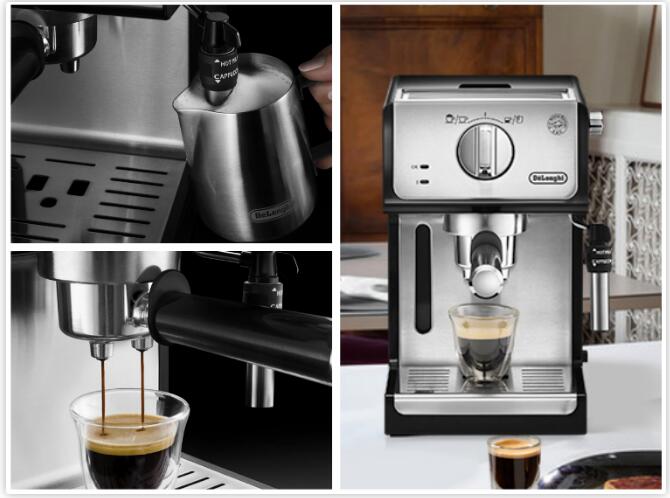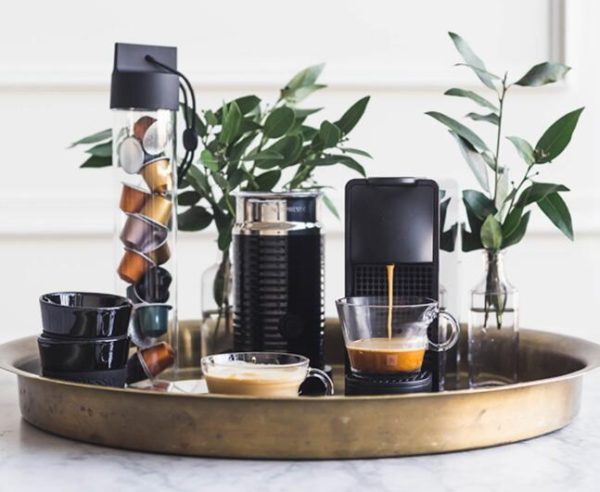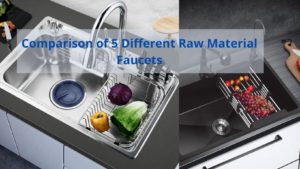Coffee machines play a decisive role in producing aromatic and delicious coffee, and there are many brands of coffee machines on the market. Generally speaking, coffee machines can be divided into fully automatic coffee machines and semi-automatic coffee machines.
[Coffee Machine Sale] Common types of coffee makers coffee pots Coffee Machine Sale classification introduction
History of the coffee pot.
The coffee pot was one of the earliest European inventions, introduced in France around 1685, and became widespread worldwide under Louis XV. It was nothing more than a glass carafe with a heated metal plate and an alcohol lamp underneath to heat it. As this coffee pot was very time consuming, the American Benjamin Thompson invented the Langford filter coffee pot, which was very popular.
In 1763, the Frenchman Tonmartin invented the idea of putting crushed coffee beans into a flannel pocket, hanging it over the side of the pot, filling it with hot water and letting the coffee in this bag be heated for a more extended period with the hot water, producing a different form of cooking and significantly improving the aroma of the coffee.
In 1800, Archbishop Debello of Paris invented a pot coffee heater divided into two sections, designed to keep the coffee’s aroma from spilling out, and is arguably the originator of today’s drip coffee pots. This type of pool is made by placing ground coffee in a perforated container at the top of the bank, from which hot water is filled and flows through these holes to the bottom of the pot. It is characterised by the use of cold water to quench and slowly draw out the coffee’s essence, drop by drop, at a rate of 40 drops per minute. Due to the plodding speed, a very finely ground coffee powder should be selected for extraction. The coffee brewed in this way is extremely low in caffeine and tastes exceptionally good.
In 1840, the British marine engineer Nabel invented the siphon coffee heater. This heater was designed because when water boils, the air pressure in the container containing the coffee powder is reduced so that the boiling water is automatically sucked into the coffee. This, in turn, was the precursor to the Belgian Royal Coffee Pot.
Types of coffee pots.
Siphon coffee makers Royal Belgian coffee makers Moka coffee makers Drip coffee makers American electric coffee makers French press coffee makers Espresso Coffee Machine Sale
Introduction to coffee pots (representing the different methods of making coffee).
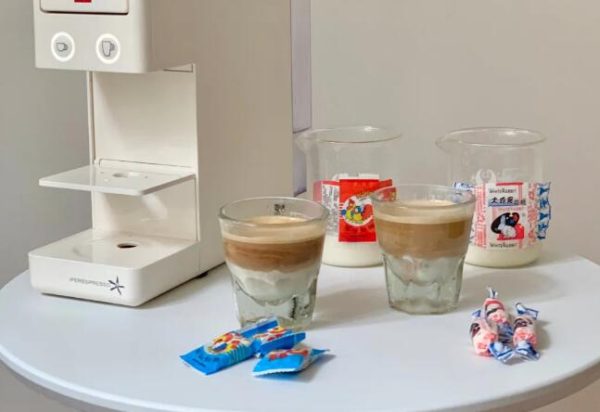
Siphon Coffee Pot
The siphon coffee pot, also known as a cork or vacuum pot, is divided into two parts, made of glass, the lower position is filled with water and heated by an alcohol or gas lamp, the coffee beans are ground to a medium thickness and placed on top, with a cloth filter in between. The four flavours and one aroma of coffee are dissolved. After the coffee and water have been fully immersed, the fire is extinguished, and when the air in the lower ball has cooled, a vacuum is created. The coffee liquid is sucked back into the base through the filter cloth, where it is poured into the pre-heated cup to indulge in its unique aroma and taste its sweet and bitter taste. In recent years, the so-called ground coffee (espresso) has become very popular, compared to the more technical and cumbersome procedures required for a siphon coffee pot, which is gradually declining in today’s business and industrial society where every second count, but the aroma of coffee produced by a siphon coffee pot is incomparable to that of ground coffee brewed by machines.
When using a siphon coffee pot to make coffee, there are a few things to keep in mind: water quantity, water quality, heat, coffee powder, coarseness, stirring and time.
Step 1: Pour in hot water to the lower ball of the glass.
The amount of water to be added to the lower ball is 200 ml for one cup, 175 ml when not pouring the bottom water and 350 ml for two cups. Dry the lower ball of glass with a rag after running the water. Otherwise the glass will easily break.
Step 2: Fill the filter with the upper ball.
Take the filter out of the water and clean it, then press it dry. Hook the hook of the filter onto the bottom of the upper ball and adjust the filter’s position to the middle with an adjustable stick.
Step 3: Once the water has come to the boil, insert the top ball into the bottom ball.
Turn the heat down to low and carefully place the glass upper ball diagonally into the lower ball, make sure the water doesn’t roll too much and spurt out, press the glass upper ball straight down slightly and rotate it at the same time.
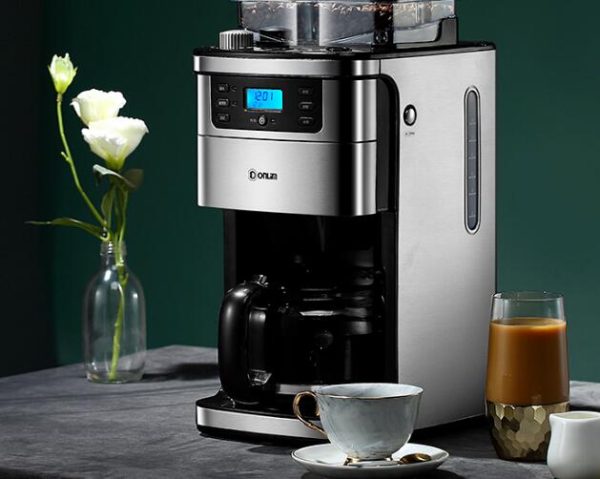
Step 4: When the water is halfway up, put in the coffee powder and start stirring, and start timing when you have finished.
Pour in 15 grams per cup and start the first stirring. When stirring, do not go around in a circle, but draw a three-quarter circle from left to right and back, pressing the powder into the water from top to bottom, so that the forces from two different directions hit each other, do not stir too long, as long as the coffee powder is dispersed.
Step 5: Make a second stir at 25 seconds.
Step 6: Stir for the third time at 55 seconds and turn off the heat at 60 seconds.
When making a single coffee cup, you only need 50 seconds (20 seconds for the second time, 45 seconds for the third time). When you turn off the heat, quickly pull up the top ball, pour off the remaining water from the bottom ball and insert it back into the full ball, this action is called pouring the bottom water, if you don’t want to do this step, the water only needs to be 175 degrees.
Step 7, turn off the heat immediately after a cold, wet towel to wipe the glass under the ball.
Step 8: When the coffee is almost finished filtering, pull up the top ball of the glass and not let the last of the coffee run down.
When using the siphon method of coffee brewing, cleaning and storing the filter cloth is troublesome. After the first use, the fabric turns from white to brown. It accumulates fats and proteins that cannot be removed entirely, creating a disgusting stench in contact with the air and seriously affecting the coffee’s taste.
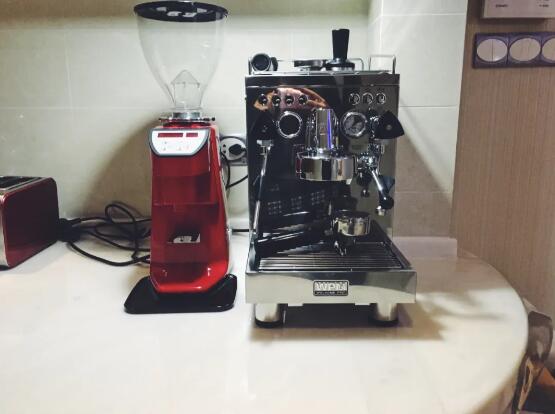
Royal Belgian Coffee Pot
It operates on the same principle as a siphon coffee, but it is straightforward!
Step 1: Fill the metal pot with the required amount of water, about 350cc for two people, and close it tightly.
Step 2: Add the required amount of coffee powder, about 30g for two people, to the glass jug at the other end.
Step 3: Lift the metal jug and open the alcohol lamp’s lid, using the pitcher to snap the lid onto the lamp and light the lamp.
When the water is heated, the hot water flows through the siphon tube into the glass jug and comes into contact with the coffee powder. Once the water in the metal jug is getting lighter and lighter, the alcohol lamp’s lid bounces off the flame, and the metal jug stops heating up and cools down.
Super practical tips for buying a home coffee machine
Moka Coffee Pot
A high-pressure, Italian-style, coffee pot originally referred to a high-pressure and fast brewing method, but later the coffee brewed in this way was also known as mocha. The coffee is first ground to uniformly fine particle size and compacted with a pressure filler in this method. The coffee bean powder in the filter must be firm and tightly formed into a cake-like mass to counter the hot water’s 8-9 bar pressure during brewing. The hot water, under intense pressure, finds a way to penetrate the coffee mass. When the mass is compacted, each bean powder is extracted evenly by the hot water and poured into the cup intact, resulting in a small cup of rich and aromatic espresso.
Because mocha coffee is made with 8 to 9 bar pressure, hot water is forced through the coffee grounds quickly, so the extraction time is only about 25 to 30 seconds per cup, saving a lot of time and cost.

A good grinder is indispensable to obtain a good quality grind because only with a hero who cuts the beans quickly, with a slow rise in temperature and a uniform fineness of grind, together with fresh coffee beans, is possible to obtain a good cup of coffee.
A good cup of mocha coffee should be firm but not excessively bitter. With milk and milk foam to get a cup of aromatic milk coffee, the aromatic mocha coffee and fine milk foam have attracted many consumers in a short time, creating a booming coffee market!
In the general household, the more economical choice is the Moka pot. It is entirely personalised shape beautiful and does not take up space. It is also viral point, the early material is mostly aluminium products, now more to the human body is more harmless stainless steel plastic material.
If ground too finely, the coffee powder will penetrate the metal filter, leaving residue and causing over-extraction and also bitter, too astringent, if ground too coarsely, the hot water will pass through the coffee too quickly and cause insufficient extraction.
Step 2, the bottom of the Moka pot into the appropriate amount of hot water, (usually cooked out of a cup of Espresso amount of not more than 60 degrees).
Step 3, the coffee powder into the middle of the Moka pot, the funnel-like container, the amount of each cup in about 8 or 9g, the coffee powder flat, slightly squeezed, but do not press too tightly, and then put into the pot.
Step 4: Tighten the top and bottom of the Moka pot ultimately to ensure that the water does not seep out of the middle while cooking. Then heat the Moka pot from the bottom, either by hand or on a particular track with an alcohol lamp or gas stove underneath, until the water boils and flows to the top.
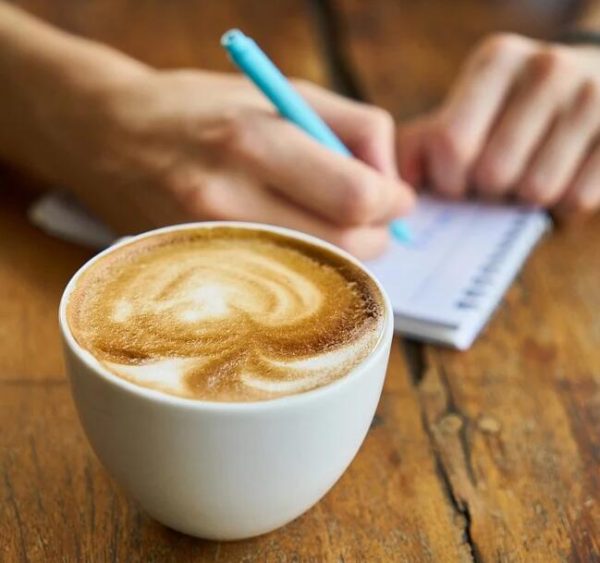
Which is the best home coffee machine brand list?
Drip coffee makers
Not a pot to be precise, but a way of making coffee. A filter or strainer is placed on top of the container, coarse ground powder is placed, water is poured in from above (the technique of adding moisture is essential) and the coffee leaks out from below.
To make a drip coffee most simply, all you need is a filter (available in many cafes, in heat-resistant plastic, ceramic or metal, depending on your preference). Then you can take a mug you usually use, place the filter on top of the mouth, put the filter paper over it, pour in the ground coffee beans, prepare a pot of hot water and brew it yourself! Prepare a pot of hot water, and you’re ready to brew your cup of freshly brewed coffee. The filter drip brewing method allows the coffee bean powder to mix with the hot water to dissolve the four flavours and aromas in the coffee, which then drip out through the filter paper.
When brewing your coffee for the first time, you can easily enjoy the excellent taste at home by paying attention to the following points.
Beans: Good beans make good coffee. Please choose the right beans for your taste, buy them in small quantities depending on how much you use and store them in a tightly closed container to keep them fresh and aromatic. Of course, if you have a larger budget, it is worth investing in a good bean grinder. The freshly ground coffee bean powder provides an airy aroma and a delicious brew that makes your investment well worth it.
Water flow: The most significant skill in brewing filter coffee is controlling the thickness and stability of the water flow. A steady, moderate flow of water spirals outwards from the filter’s centre, like a stirring rod, stirring the coffee powder and hot water evenly, releasing all the richness and sweetness. If you’re already hooked on filter coffee brewing, you may want to add a sleek brew pot to your collection. Its most distinctive feature is its long, thin spout, which makes it easy for those who have never used one before to pour an adequate, steady stream of water, helping you to become a professional brewer instantly, and making this cup of coffee even more delicious.
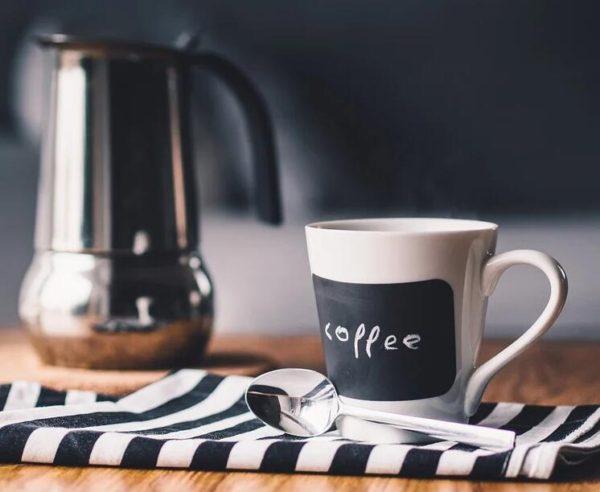
Warm your cup: Another reminder to all coffee lovers, hot coffee should always be consumed while it is still hot; it is the best time for coffee. Pour hot water into the cup to keep it warm, then pour off the hot water and fill it with the freshly brewed coffee to help keep it hot for longer.
Step 1: Fold the top part of the filter paper and the stitching and place it in the dripper.
Step 2: Using a measuring spoon, pour a portion of the coffee powder (about 10-12g per person) into the dripper and tap it a few times to flatten the surface.
Step 3: Boil the water in a teapot, pour it into a kettle with a fine spout and gently and steadily pour the boiling water (approx. 95°C) into the kettle centre, slowly spiralling until the water penetrates and spreads over the coffee powder. Be sure to pour slowly.
Step 4: To extract the tasty ingredients, steam the swollen coffee powder for a little longer (leave for about 20 seconds).
Step 5: For the second time, pour the boiling water slowly over the surface of the coffee powder. The amount of water injected must be the same as the amount of coffee extracted, keeping the amount of boiling water in the filter constant.
Step 6: Stop when the extracted liquid reaches a human volume, discard the filter paper with the boiling water left inside.
How to clean and maintain a semi-automatic coffee machine?
French Press Coffee Pot
Pour the coffee powder in, add hot water and after 5 minutes press the coffee filter down, it is very convenient.
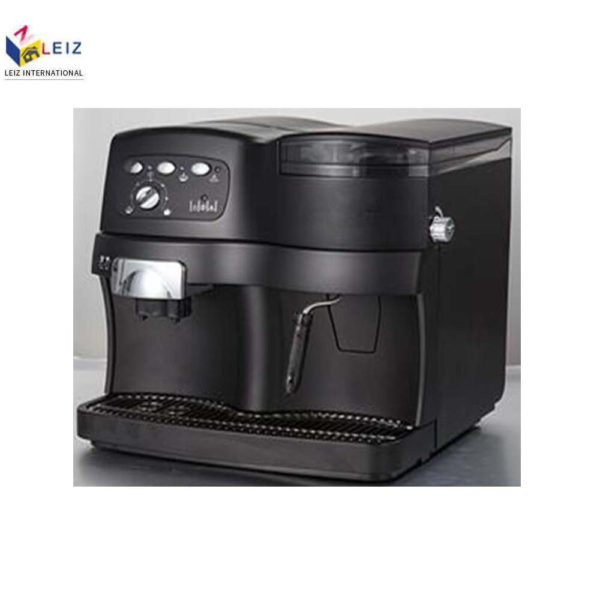
Espresso machine
Introduction: To make a perfect cup of espresso or cappuccino, a unique Coffee Machine Sale is required. The device used to make this coffee is an espresso machine. This machine uses 9 atmospheres of steam at 90 degrees Celsius to extract 30 ml of strong coffee in a short time of 24 seconds.
Features: espresso machines can be divided into semi-automatic and fully automatic. In simple terms
A semi-automatic Coffee Machine Sale is an espresso machine that requires you to grind the coffee yourself and then fill it with pressure. The quality of the coffee produced will vary depending on the person operating it. A fully automatic machine is automatic from grinding to dispensing, and the quality of each cup is more balanced. Still, the taste is slightly inferior to that of a semi-automatic espresso machine.
Taste: aromas and flavours coalesce, with much less caffeine intake.
